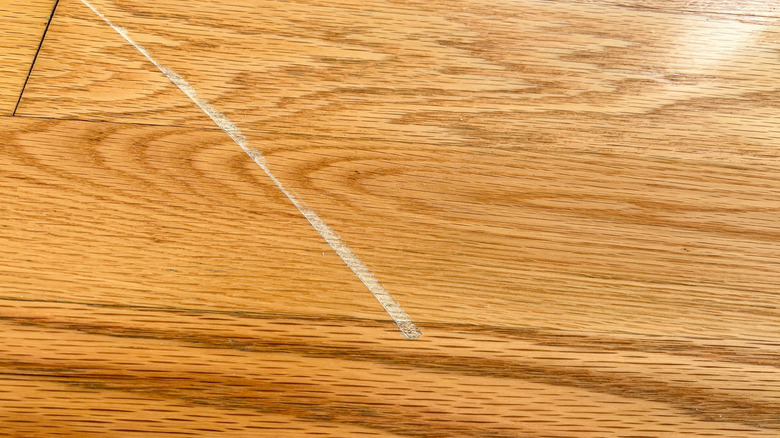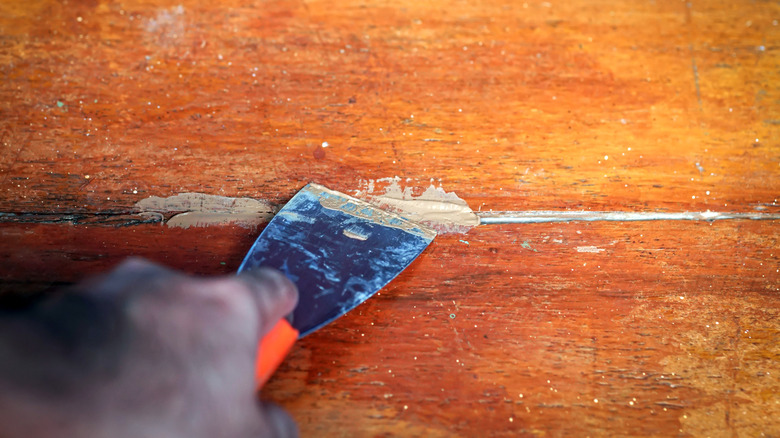How To Repair Hardwood Floor Scratches Without Calling In The Pros
Whether you have solid wood or laminate flooring, minor scratches in hardwood floors can be fixed in a jiffy using wax wood repair sticks. They come in many colors, so matching the hue of your flooring should be easy. You simply rub the wax filler stick over the scratch or crack, and then polish off any excess with a combination of a green scrubbing pad or sponge from your kitchen and a paper towel. But before you get busy with the wax stick, there are a couple of things to do first. The most obvious is to clean the scratches and the area around them to remove dirt, wax, and residue that has built up over time. Use warm water with a small amount of dishwashing liquid, wiping the area clear of the soap residue with clean water. Avoid floor cleaner products that may or may not leave protective residue behind — this can inhibit the wax bonding to the wood.
Once the scratches are clean, remove any loose wood fibers if there are any. With the preparation done, grab the wax wood repair stick and rub the tip into the cracks. Use a good deal of elbow grease here, the goal is to push hard enough to force the wax into the cracks. When you have completed that task, grab the kitchen pad and rub the area vigorously with the grain of the flooring, back and forth along the length of the wooden floor pieces. Follow up with a paper towel, continuing to polish over the area. The wax should level in the scratches, and they will virtually disappear.
Deeper cracks and scratches
Larger scratches and cracks can be repaired with wood filler, like this Minwax option from Amazon. Note that wood filler is different than wood putty. Fillers will harden and you can sand them afterward. Putties stay soft and are meant for use under finishes and for tiny voids like nail holes. Fillers come in water-based and solvent-based formulas, and some come pre-colored or are stainable. Water-based wood fillers have less odor, but may be less durable in the long run when compared to solvent-based products.
To use a wood filler, start out with the same preparation as you do with the wax wood repair sticks — cleaning and removing loose wood fibers. Next, if you can, surround the crack with masking tape to prevent spreading wood filler where you don't want it, which will save you sanding time. Wood filler can harden and stick to surfaces, and masking off the cracks can keep it from bonding where you don't want it. Use a flexible putty knife to work the filler into the crack or scratches. It should overfill the void by just a bit. Allow it to cure or dry and then sand it smooth. You may need to apply a second layer to fill the crack properly.
When it is smooth you can apply a stain or a wood marker to more perfectly match your flooring. When the crack is well filled, its gloss may not match the surrounding wood. If that's the case, apply paste wax onto the area and polish it with a paper towel or soft cloth. This will blend the wood filler's appearance with the surrounding wood flooring.

